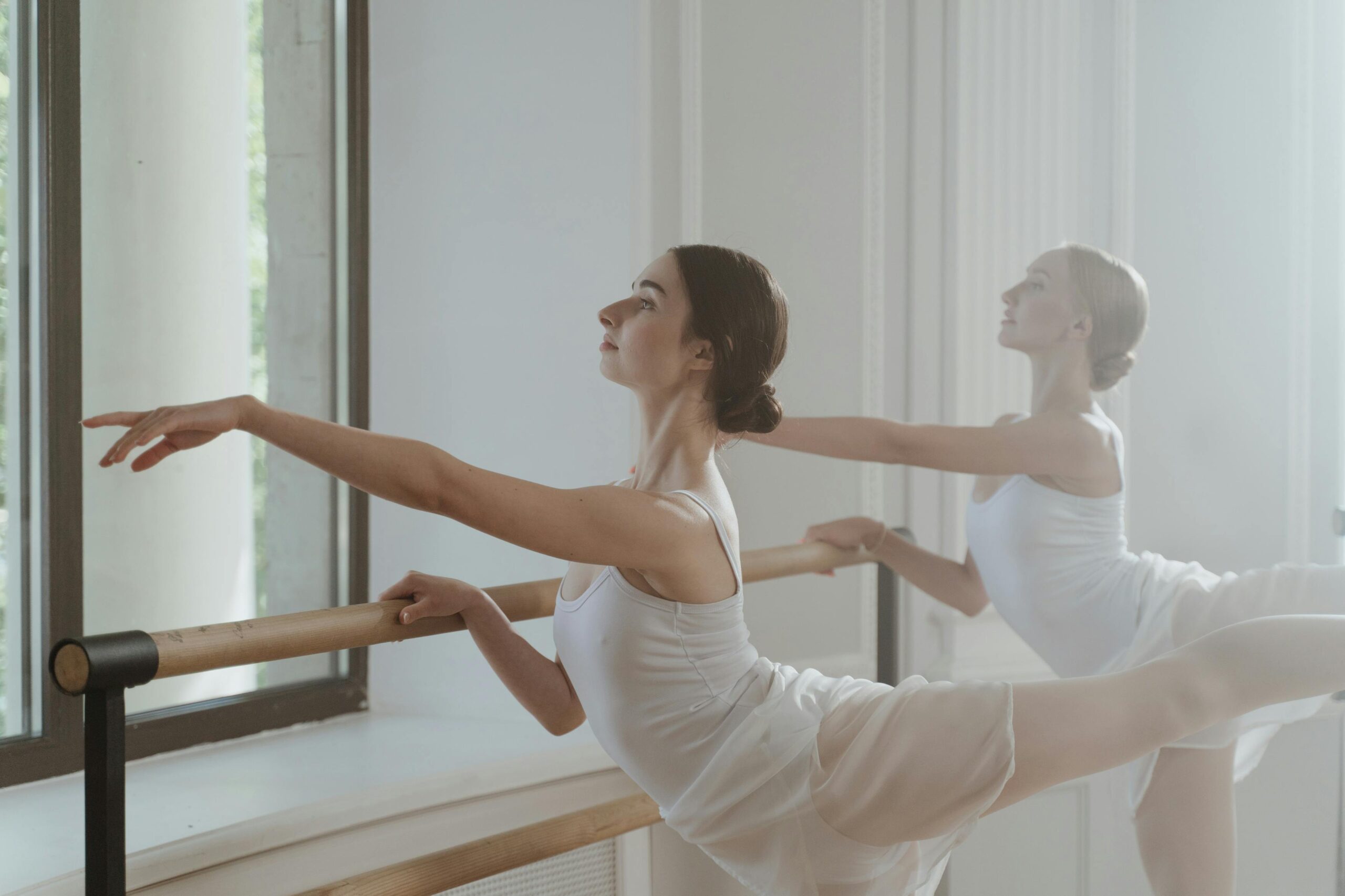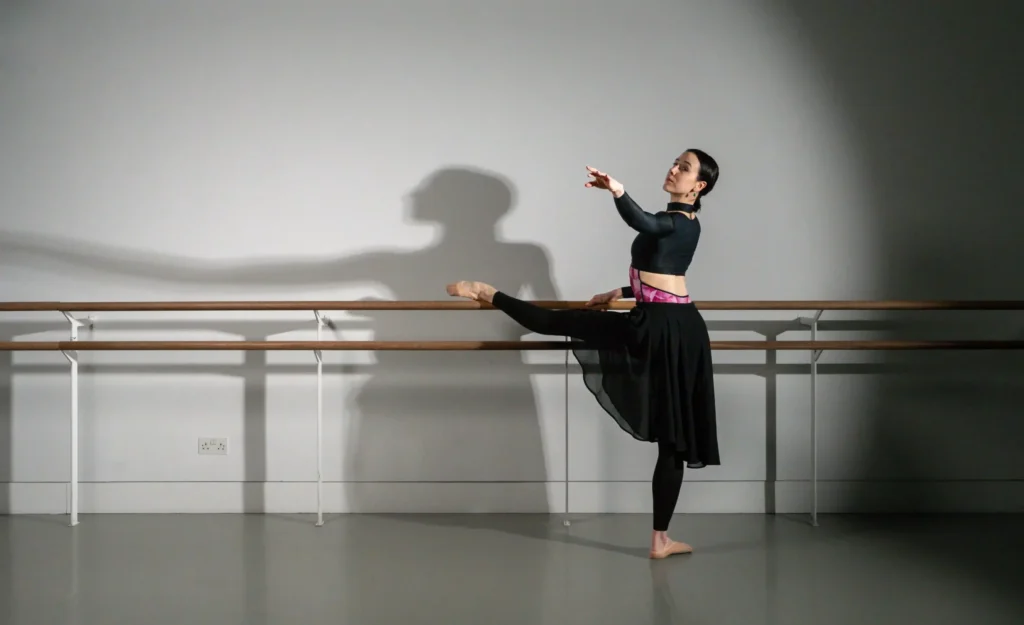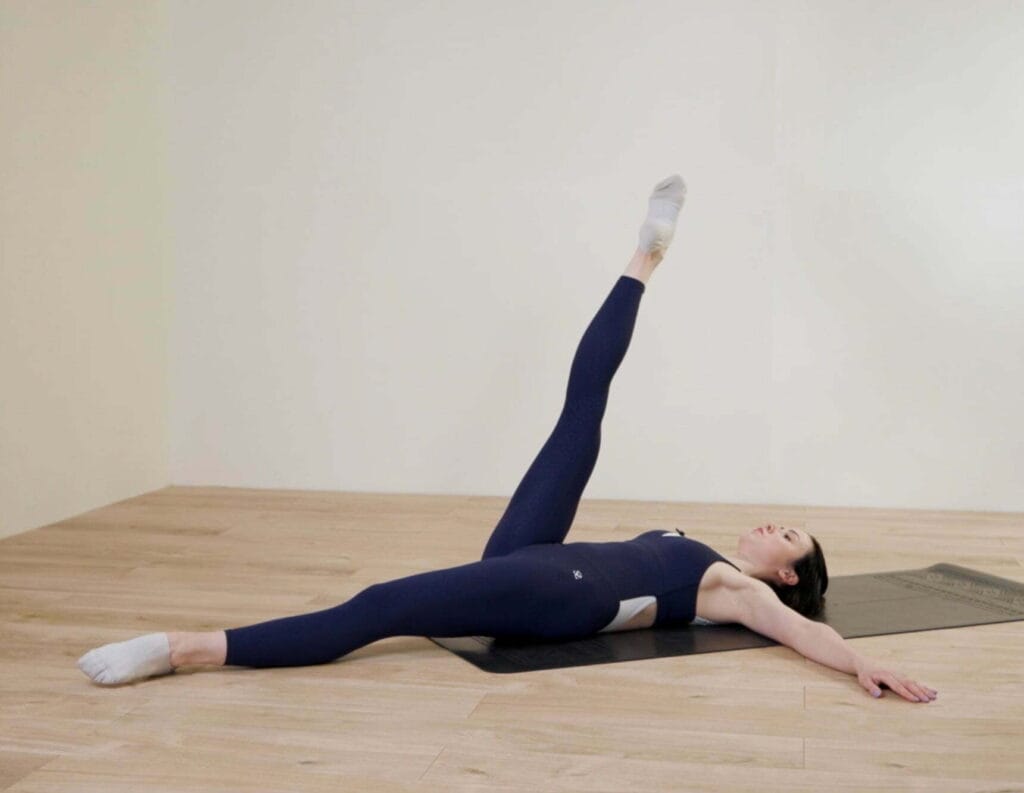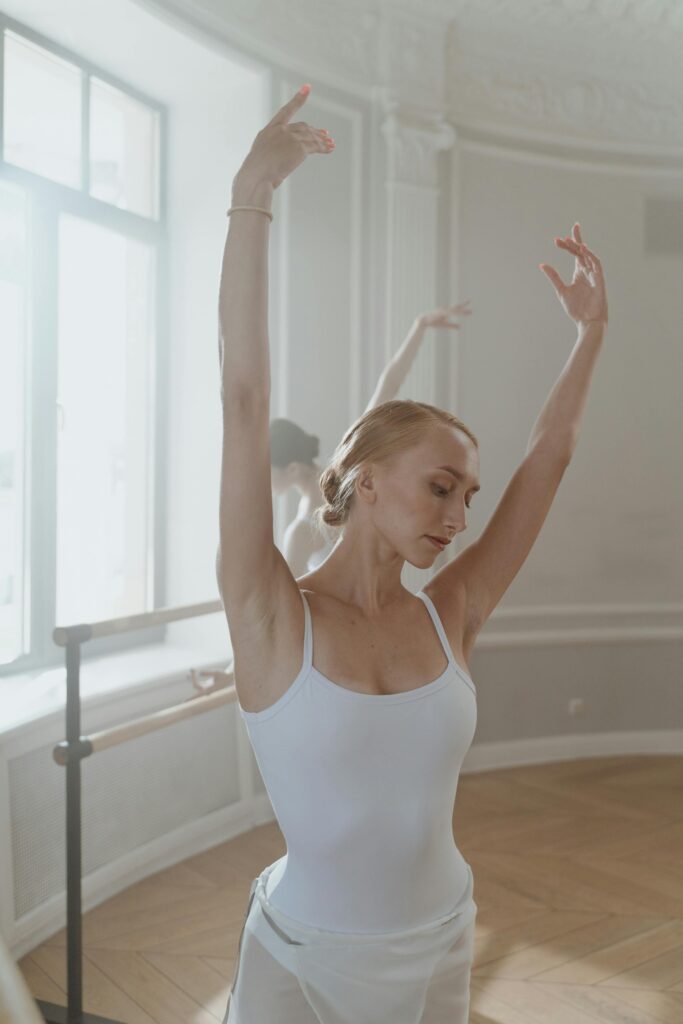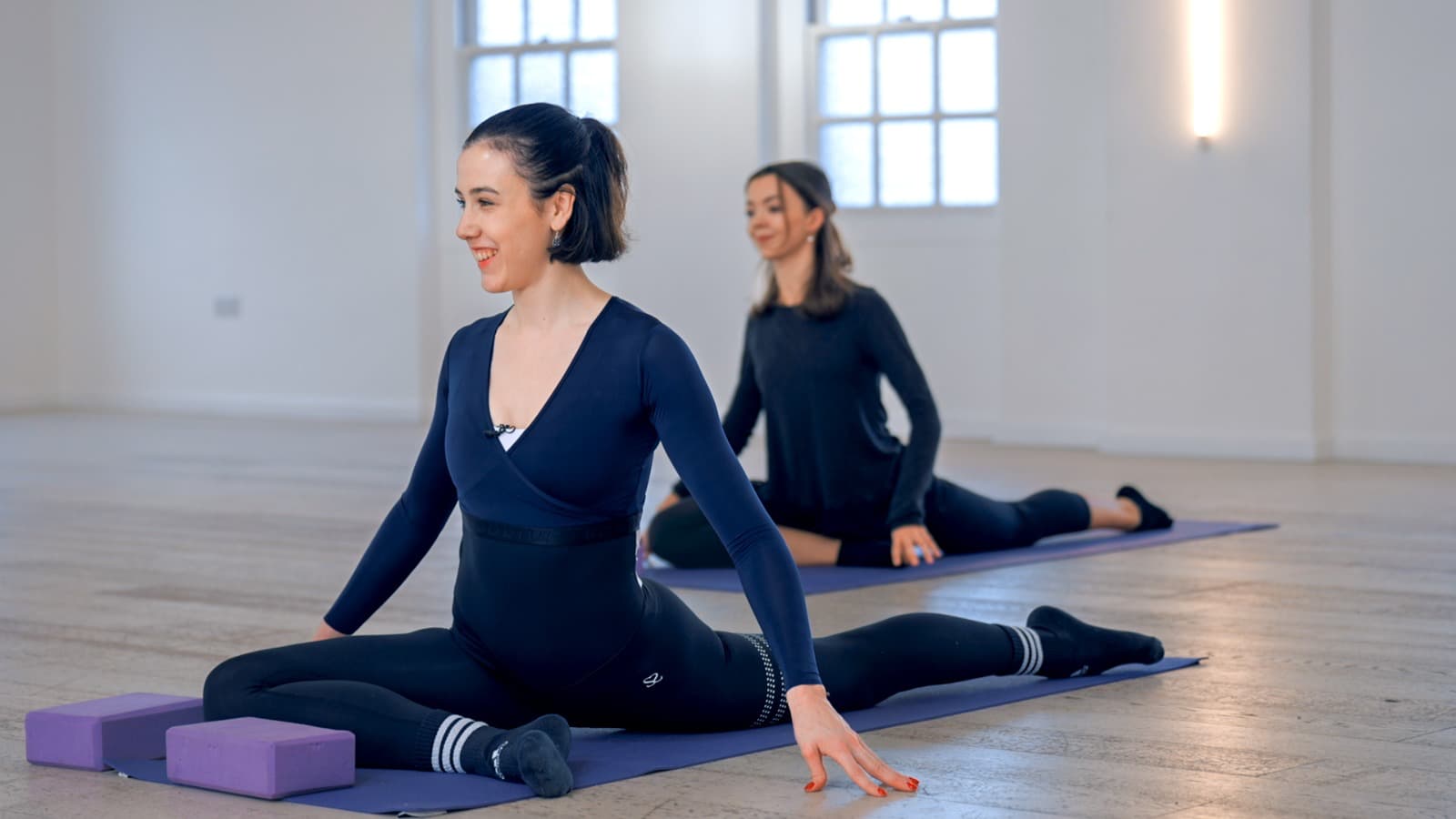In the enchanting realm of ballet, where grace, strength, and artistry unite, every part of the body plays a crucial role in conveying emotion and narrative. Among these, the arms hold a special place, often referred to as a ballet dancer’s “calling card.” The way a dancer moves their arms can transform a performance from mere steps into a captivating story.
In this article, our online ballet studio, led by Isabella McGuire Mayes, looks into the world of ballet arms, exploring what to do with them during different movements, how they contribute to elegance and grace, and why toning them through exercises during practice is essential. We’ll also emphasise the significance of maintaining fluidity and precision in arm movements, particularly in styles like the Vaganova method, which holds arms in high regard. Remember, you can join our online ballet studio through an affordable soloist membership for live classes and recorded classes – and get a FREE 14 day trial.
The poetry of ballet arms
Imagine a swan gliding gracefully across a serene lake or Juliet, reaching out longingly to Romeo from her balcony. In these iconic ballet moments, the arms play a pivotal role in conveying the depth of emotion and storytelling. Dancer’s arms are not just about aesthetics; they are an essential element of communication between the dancer and the audience.
- Fluidity and precision: Ballet arms are characterised by their fluid, seamless movements. The ability to transition gracefully between positions is vital. Whether it’s the softness of a romantic adagio or the precision of a fast-paced allegro, the arms should move with intention and precision.
- Enhancing lines: The arms help in creating the lines and shapes that are synonymous with ballet. From the delicate curve of a port de bras to the elongated extension of an arabesque, the arms contribute significantly to a dancer’s aesthetic appeal.
- Emotional expression: Beyond aesthetics, the arms convey emotions and narratives. A subtle change in the position of the arms can express longing, joy, sorrow, or any other emotion the choreographer intends to convey.
Ballet arms in action
Now, let’s explore how to use ballet arms during different movements and positions:
- Port de Bras: Port de bras, or “carriage of the arms,” is a fundamental part of ballet. It involves a series of graceful arm movements that flow seamlessly from one position to another. Common positions include first position (arms rounded in front), second position (arms extended to the side), and fifth position (arms rounded above the head). These positions are used in various ballet exercises and routines, adding a layer of elegance and sophistication.
- Allongé: In ballet, arms are more than just limbs; they’re instruments of expression, conveying emotions and narratives. “Allongé,” a French term meaning elongation, epitomises this concept. It involves extending the body to its graceful limits, with the arms and head harmonising to create elegance and expressiveness. Allongé is essential in ballet because it allows for emotional expression, accentuation of movements, and seamless transitions. The graceful extension of the arms and the tilt of the head can communicate love and longing in a romantic pas de deux.
- Soft hands: Achieving expressive arms in ballet hinges on maintaining soft hands, where the fingers and wrists remain gentle and unstrained. Soft hands enhance aesthetics, connect to the engagement of the back muscles, and allow for greater emotional expression. They reflect inner grace and control, serving as a physical embodiment of a dancer’s artistry. In combination with allongé, soft hands create a harmonious, emotionally resonant dance experience that captivates audiences and elevates ballet to a profoundly expressive art form.
The importance of back strength for graceful arms
In the world of ballet, the arms and back are often considered the unsung heroes of graceful movement. Building strength in these areas not only enhances the aesthetic beauty of your performance but also ensures stability, control, and a deeper connection to your back muscles.
- Port de bras: This translates to “carriage of the arms,” and is a fundamental element of ballet, captivating audiences with its lyrical and expressive qualities. It involves a graceful sequence of arm positions and movements that convey emotions, narratives, and artistic expression. Through port de bras, dancers seamlessly transition from one position to another, creating an enchanting visual and emotional journey. Mastery of port de bras not only enhances the beauty of ballet but also showcases a dancer’s artistry and storytelling abilities, making it an essential component of classical dance.
- Stability: A strong back and arms provide essential stability and balance for a ballet dancer. These muscles help you maintain proper posture and alignment, ensuring that every movement flows seamlessly. A stable back supports your balance during challenging steps like pirouettes and arabesques.
- Control: Building arm and back strength contributes to better control of your movements. This control allows you to execute each step with precision, making your performances more impressive and expressive.
- Back engagement: Focusing on arm and back workouts can help you connect with and engage your back muscles effectively. This connection is vital in ballet as it enables you to achieve fluidity and extension in movements, from pliés to développés.
To develop that all-important back-arms connection, we highly recommend you try out our Ultimate Back Workout class that focuses on strength, flexibility, and port de bras practice. This class is designed to cater to dancers of all levels, helping you refine your arm movements and build the necessary strength.
Vaganova style and the emphasis on elegant arms
The Vaganova method, a renowned ballet training system developed by Agrippina Vaganova, places a strong emphasis on elegant arm movements. In this style, the arms are seen as an extension of the dancer’s expression, and their fluidity is highly valued. The Vaganova style teaches dancers to achieve a perfect blend of strength and softness in their arms, creating a mesmerising effect on stage.
- The three basic arm positions: The Vaganova method introduces three basic arm positions, each with a specific foundational purpose. These positions are used as a foundation for various ballet movements and mastering them is essential.
- Adaptive and graceful: Vaganova-style arm movements are known for their expressiveness They can convey a wide range of emotions and narratives, adapting seamlessly to the choreography while maintaining grace and precision with other worldly elegance and softness.
A very effective way to build elegance and strength into your arms is to try our Beautiful Arms course and Beginners Basics part two course which targets foundations of ballet arms as well as strength and flexibility of the back and arms.
Ballet exercises to strengthen your back
Incorporating these back exercises into your training routine will help you strengthen your back muscles, allowing for more freedom and softness in your arm movements:
- Superman: Lie face down on a mat with your arms extended forward and legs straight. Inhale and lift your arms, chest, and legs off the ground, engaging your lower back muscles. Hold the position briefly, then exhale and lower back down. Repeat.
- Bent-over rows: Stand with your feet hip-width apart, holding a dumbbell in each hand with your palms facing your thighs. Bend at your hips, keeping your back straight, and let the dumbbells hang in front of your legs. Inhale and pull the dumbbells toward your hips, squeezing your shoulder blades together. Exhale and lower the dumbbells back to the starting position. Repeat.
- Lat pulldowns: Use a lat pulldown machine at the gym or a resistance band anchored above you. Sit or stand with your arms extended overhead, holding the bar or band with a wide grip. Inhale and pull the bar or band down towards your chest, engaging your latissimus dorsi muscles. Exhale and slowly return to the starting position. Repeat.
- Bridge pose: Lie on your back with your knees bent and feet flat on the ground, hip-width apart. Place your arms by your sides, palms facing down. Inhale and lift your hips off the ground, creating a straight line from your shoulders to your knees. Hold the bridge position for a few seconds, engaging your glutes and lower back. Exhale and lower your hips back down. Repeat.
- Cat-cow stretch: Begin on your hands and knees in a tabletop position. Inhale and arch your back, lifting your head and tailbone towards the ceiling (Cow Pose). Exhale and round your back, tucking your chin and tailbone (Cat Pose). Move between these two positions, focusing on the stretch and engagement of your back muscles, articulating each movement of your spine. Repeat.
Looking for a great back workout designed for ballet? Get expert guidance in this 15 minute online ballet arms workout class that will build strength and tone!
Ballet arms are the epitome of elegance and strength, serving as a ballet dancer’s conduit for storytelling and emotional expression. Achieving the perfect blend of grace and power in your arms is essential for a captivating ballet performance. In styles like the Vaganova method, this emphasis on elegant arms is particularly pronounced, highlighting the significance of fluid and precise arm movements.
To master the art of dancer’s arms, it’s crucial to strengthen both the back and arm muscles through targeted exercises. A dancer with a strong back and well trained carriage of the arms not only looks more graceful but also possesses the stability and control required to execute complex movements with finesse. So, embrace the poetry of ballet arms, cultivate strength and elegance, and take your ballet performance to new heights, captivating audiences with the mesmerising language of dance.
Join our online ballet studio for arm workouts, barre and much more – FREE 14 day trial
Support your ballet practice by joining our online ballet studio, where we offer a range of specialised classes to support your journey, including live studio classes and recorded classes you can do in your own time. Even better, you get a FREE 14 day trial!
Led by the experienced ballet instructor Isabella McGuire Mayes, the first British graduate of The Vaganova Ballet Academy and a soloist of The Mikhailovsky Ballet, our online classes offer the expertise and guidance necessary to refine your skills and enhance your performance. Whether you’re a beginner or an experienced dancer, our studio provides the perfect environment to elevate your ballet practice and achieve your dance aspirations. Join us today – you can view our courses and classes here and sign up for our affordable soloist membership.
